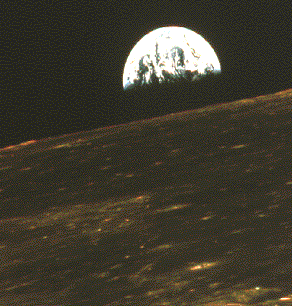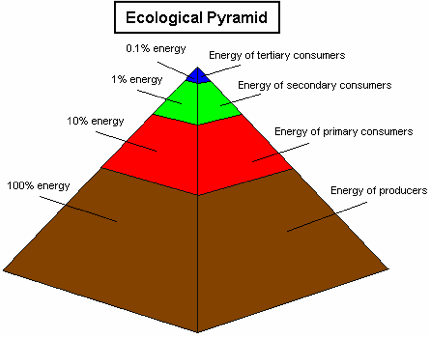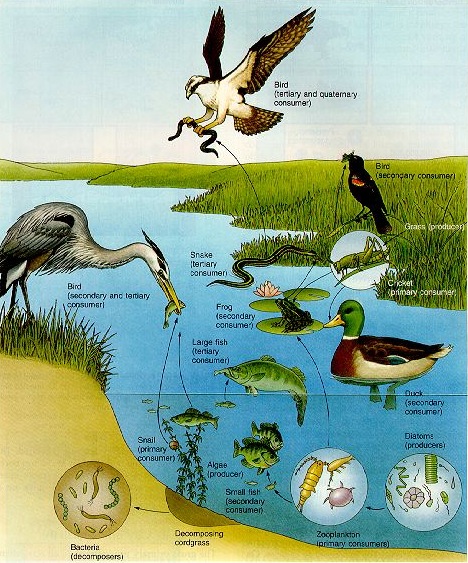
The Dominant Animal: Chapter 9, Cycles of Life: ecology and biology
an on line guide
Lynne Margulis, Symbiotic Planet, & Early Life.
Chapters
Nine
Background | Outline | Argument | Evidence | Conclusions
The cycles of life, death, renewal & the re-creation of biocommunities.
Defining ecology: it's a problem.
Ecology is the study of the functions of living populations in the communities where they thrive and in which they are nourished.
Energy conversion in the form of food webs & the cycling of nutrients control growth.
Outline
-
Confusing definitions of ecology
- laws and functions
- basic concepts are foundations
-
Argument
- three universal categories revealed
- warnings
-
Evidence
- dialectical analysis applied
- matrix reveals
- six conditions of existence
-
Summary
- What limits human growth
- The concepts of optimal conditions, optimality, and stability
Background | Outline | Argument | Evidence | Conclusions
Try taking next steps.
Stewarding the land, air, and water as the basis of life.
Edward O. Wilson. degrading
-
simple: the scientific study of an organism or species in its surroundings. [what a species is? breeding populations? other.]
laws | niche | trophic webs
Three laws of ecology dictate all life:
I To every action there is always an equal & opposite reaction.
II Whatever amount you start out with you end up with.
III Everything costs something.
Niche, three varieties, or ways to measure any creatures needs:
One is "spacetime address," range and life cycle.
Two is occupation, or means of acquiring a living.
Three is energy utilization over time in a place.
Trophic levels, mean that an organisms feeding behavior places a creature in certain observable and measurable levels in a food web based on the criteria of how they either make their own food or feed off of other levels:

|
|
Background | Outline | Argument | Evidence | Conclusions
Argument
There are powerful elements, forces, and factors unseen and understood as universal in our experience of nature:
-
Forces, Three or four fundamental movers of all fluctuations we measure.
-
Factors, The inherited and acquired capacities of living creatures to actually reshape material conditions of existence immediately and for enduring periods of time.
"Nature is more complicated than we can think."
J. B. S. Haldane, evolutionary biologist.
"Nature bats last."
Because of the Four Fundamental Forces:
Gravity is the latent force of matter that holds the stars and planets together.
Weak nuclear interaction is 1025 times stronger than gravity accounts for radiation.
Electromagnetic is 1036 times stronger than gravity holds atoms together.
Strong Nuclear is 1038 times stronger than gravity holds atomic nuclei together.
When these forces were discovered.
Background | Outline | Argument | Evidence | Conclusions
Evidence
Six points emerge after dialectically analyzing nature
By dividing nature in two and then into two again we see the complexity emerge when we put the pieces back together:
| Four divisions | 3. evolutionary | 4. ecological | |
|---|---|---|---|
| 1. | inorganic | oxygen | iron & Ca |
| HABITAT | |||
| 2. | organic | five kingdoms | 20 food crops |
| BIOCENOSE § | |||
§ Biocenose is an association of different organisms forming a closely integrated community.
Six points:
1) Take a deep breath and hold you breath." We are co-conspiring.
2) habitats as the inorganic conditions (light, air, slope, temperature, elements, compounds, pH, water.)
3) biotic communities as the organic conditions (bacteria, vegetation, fungi, animals, parasites.)
- where organisms exist
- range of a species
- biomass as the measure of productivity in a biome / biocommunity
4) Eutrophy & oligotrophy are divergent levels of nourishment-nutrient cycles
Background | Outline | Argument | Evidence | Conclusions
5) Synergy how the whole system is greater than the mere sum of the working parts.
6) biosphere as the totality of life on the planet in its systemic relations.
"…human beings are unlikely to be capable of assembling reasonably stable large-scale ecosystems"
We are instead an edge species (savannas, farms, woodland)
We thrive in disturbance and disturb large ecosystems with agricultural, mining, residences, and industrial facilities.
Duration of human disturbance is essentially a limitation.
A) carrying capacity density quantity B) assimilative capacity intensity quality, timing or frequency, & distribution. Optimum–where too little and too much hinder growth.
The status of–or most favorable condition for– is optimality.
There is a range withing which all creatures thrive; so too the recovery time necessary to re-establish an optimal status.
Background | Outline | Argument | Evidence | Conclusions
Sources authors concepts Miller, environ. science
Colinvaux, niche
Bateson, geometry
Krebs, 10 commandments
Margulis, eukaryots cells
Lovelock, gaia

Background | Outline | Argument | Evidence | Conclusions
Mayr | Thomas | Wilson | Hardin | Darwin | Margulis | Steingraber | Carr | Keller | Watson






